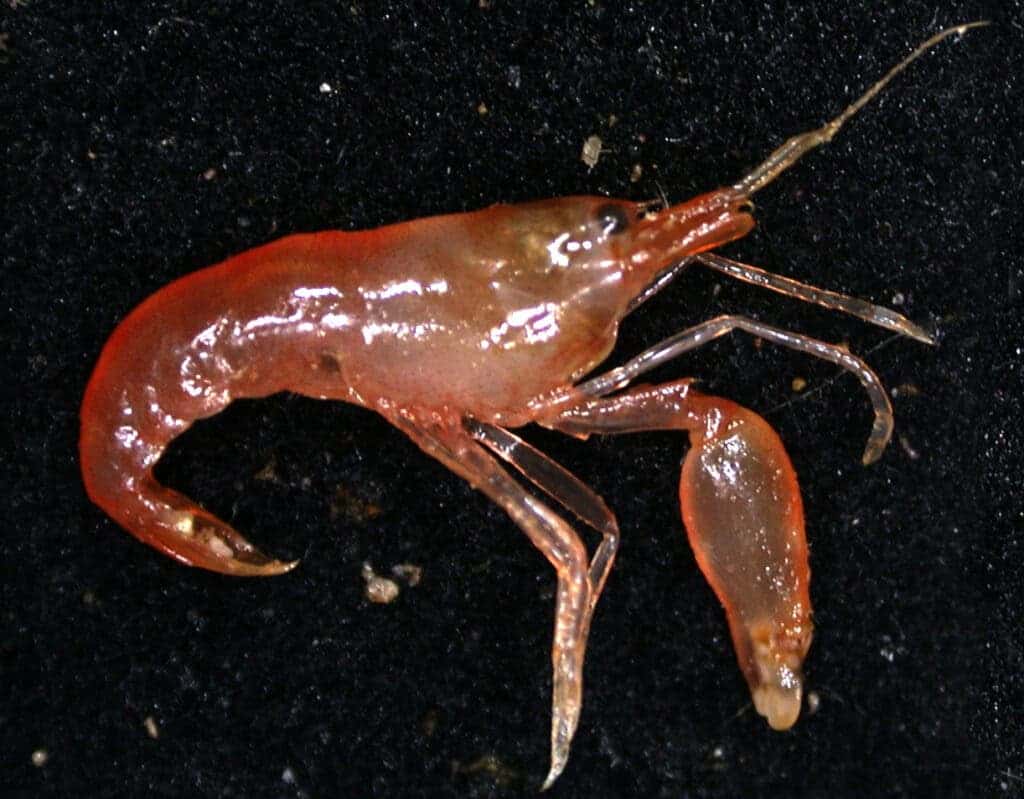We’ve seen a lot of superheroes in comics and movies lately. A lot of the time, these superheroes are inspired by animals. From a spider to a wolverine or a cat, we thought we’d seen it all — and then came the shrimp superhero. But it’s not just an ordinary shrimp, it’s a pistol shrimp — and the pistol shrimp is as close to a superhero as you can get, without any fiction.

Pistol shrimp or snapping shrimp are small crustaceans belonging to the family Alpheidae. They’re about 4 cm long and weigh up to 25 grams. So far, nothing special. But their magic lies in their disproportionately large snapper claw which is half the size of their tiny body.
This claw can work wonders as it pretty much acts as a gun that can shoot and exterminate its prey. It does the lock and load with bubbles as its ammunition. Yes, these pistol shrimps are capable of turning harmless, air-filled bubbles as bullets.
Bubble bullet
By closing the claw at extremely high speeds, the shrimp expels an air bubble at more than 100 kilometers per hour (62 mph) toward its prey.
The mechanism of this water gun starts when the top part of the shrimp’s claw opens to allow water to enter a small chamber in its crook. Then, when it clamps down with impressive force, the pressure coming from the small plunger on the top claw shoots the water. This expulsion generates a powerful bubble that is deadly to the shrimp’s prey and creates an amusing loud popping sound. The snap sound measures about 218 decibels which is actually louder than a gunshot, although it only lasts a tiny fraction of a second. In fact, the tiny pistol shrimp competes for the title of “the loudest animal in the sea” with much larger creatures like the sperm whales.

The amount of force and heat generated by the shrimp is also huge. When the bubble pops, it generates up to 8,000 degrees Fahrenheit (4,427 degrees Celsius) of heat — four times hotter than lava. The heat dissipates quickly and only affects the unfortunate small creature the shrimp aimed at.
Even if the shockwave is localized and the damage it does is small in scale, it’s still a massively impressive hit. In fact, pound-for-pound, the pistol shrimp is one of the strongest creatures that has ever existed.
It’s not easy to develop such a striking adaptation. In fact, based on recent research, it took over 100 million years of evolution before the pistol shrimp ended up with the super-claw it has now.
From the sea to the screen to the lab
The Netflix superhero film “Project Power” has popularized this pistol shrimp’s unique ability as the character played by Jamie Foxx is granted a few minutes to turn raindrops into high-speed jets that annihilate anything that obstructs their path. Who would have ever thought that a critter that is just a few inches long would have this bewildering ability that could make a difference in the movie world?
But for researchers, the pistol shrimp has been popular for years. In 2019, engineers copied the mechanism used by the pistol shrimp to produce underwater plasma. Prior research had shown that snapping shrimps are able to produce both a shockwave and plasma using their outsized claw, and by studying shells left behind when the shrimp molt and taking accurate 3D scans of their claws, the researchers were able to recreate the mechanism.
Just a few weeks ago, researchers found that the shrimp has a special orbital hood that protects its claw from the shockwave and heat. Orbital hoods dampen shock waves by trapping and expelling water at key moments, and understanding this mechanism could be useful for engineers looking to design underwater materials.
Colliding with the U.S. Navy
Believe it or not, the story of this shrimp starts in WWII, when US submarines would detect a weird crackling interfering with their sonar. This has alarmed navy forces who first feared some sort of unusual weaponry.
It didn’t take much to convince the US navy to ask for the help of researchers from the University of California Division of War Research. Just when they thought their opponents were behind this mess, the researchers had pinpointed the source of the sound — the snapping shrimps.
The navy has since trained sonar operators to recognize the snapping sound and not interpret it as something else, but when these shrimp gather in large colonies, their snapping can interfere with sonar and even underwater communication. In fact, these shrimp are a major source of noise in the ocean and can even interfere with highly specialized anti-submarine warfare.
But despite all this, the pistol shrimps are actually a relatively peaceful bunch.
Beyond the violence
Really, it’s not all violence with the pistol shrimp. They are cooperative creatures and normally they live in clusters, which offers them some form of protection against the fish that prey on them. A few species even work together with other animals such as gobies: gobies serve as a guard for danger while the shrimp dig burrows. When the sight of danger is nearby, they both rush into the hole.
In fact, pistol shrimps are actually a favorite of aquariums because of their peaceful habits and low maintenance requirements.
Snapping shrimp are typically found in warm, shallow subtropical waters all over the world, and most species are not endangered — though they face the typical threats associated with human activity (like pollution and climate change and overfishing. It’s high time we start giving these bubble-slinging crustaceans the attention — and respect — they deserve.






